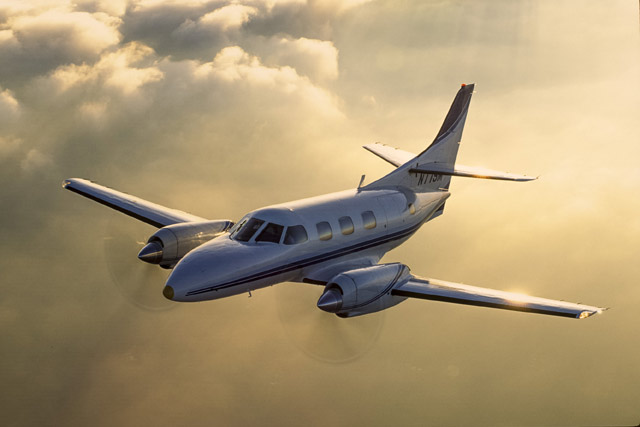Quick Look: Merlin III
Speed, good range/payload tradeoffs, and styling cache

Fairchild’s Merlin III towers over the ramp among the masses of King Airs, Cheyennes, and Conquests. Designed by the legendary Ed Swearingen, the Merlin III is an attractive and solidly built twin turboprop that backs up its looks with a high-speed cruise nearing 300 KTAS and continent-crossing range of 2,700 nm.
While early Merlins were highly modified Beechcraft Queen Airs with turbines in place of Lycoming pistons, the Merlin III series is a clean-sheet design. In fact, it was the basis for the Metroliner airliner (affectionately known as the “San Antonio sewer pipe”), and Merlin IV. Fairchild was so impressed with the line that it bought majority ownership of Swearingen Aviation in 1980.
Merlin III and IIIA models use 840-shaft-horsepower Honeywell (nee Garrett) TPE331-3 turboprops while the IIIB and IIIC have 900-shaft-horsepower TPE 331-10 engines. The last few airframes built in 1984 and 1985 were winglet-equipped versions called Merlin 300s.
Honeywell engines are well known for creating lots of power from a lightweight and compact package. They also are pretty efficient, pulling the Merlin along on 500 to 600 pounds of Jet-A an hour.
Garrett engines are also known for being quite loud on the ground, since they idle at 72-percent power. And they’re known for being hard on batteries, making GPU starts preferable. In flight, pilots describe the cockpit as noisy. But the cabin, further away from the props, is relatively quiet.
Typical high-speed cruise is in the 280- to 290-KTAS range. Cabins are typically arranged with six to eight seats, one of which may double as a lavatory seat. A subset of Merlin IIICs have a 13,230-pound maximum takeoff weight thanks to a special FAR exemption. Some operators use the boosted weight to bring along a second crewmember, since the Merlin has a reputation as being a “busy” airplane for a single pilot.
Because it’s a legacy turboprop, avionics and equipment cover the gamut from original Collins avionics to various more modern retrofits. Regardless of equipment, flying a Merlin III can be a chore for a single pilot. It is heavy in the controls and often described as truck-like. The positive side of truck-like handling is stability when flying in IMC conditions.
According to Vref, prices run a wide range from $290,000 for a 1970 III to $750,000 for a 1985 Merlin 300.
With its tall stance, dual wheels on every gear, and unique inverted engine inlets, the Merlin III’s appearance alone lets everyone know it’s a different animal. And if going fast for long distances in a comfortable cabin is your mission, the Merlin III will fit the bill.
Pete Bedell is a pilot for a major airline and co-owner of a Cessna 172 and Beechcraft Baron.
SPEC SHEET
Fairchild Merlin III
Powerplant | 840- or 900-shp
Honeywell TPE331-3 or -10
Length | 42 ft 2 in
Height | 16 ft 10 in
Wingspan | 46 ft 3 in
Seats | 2 + 8
Max takeoff weight | 12,500 lb
Takeoff distance over 50-ft obstacle | 3,219 ft
Max cruise speed | 296 kt
Landing distance over 50-ft obstacle | 2,200 ft
Range | 2,700 nm

